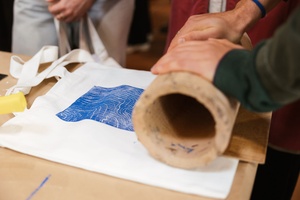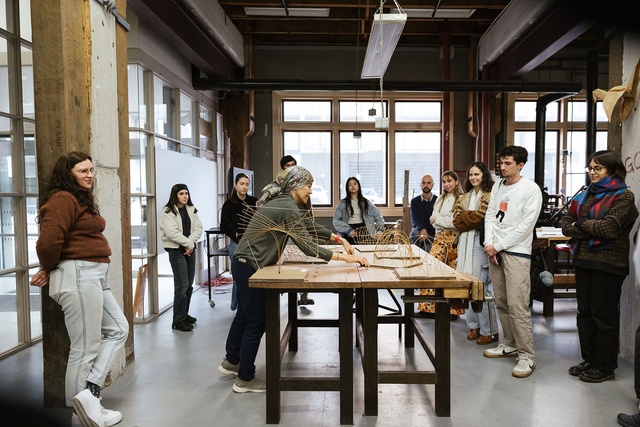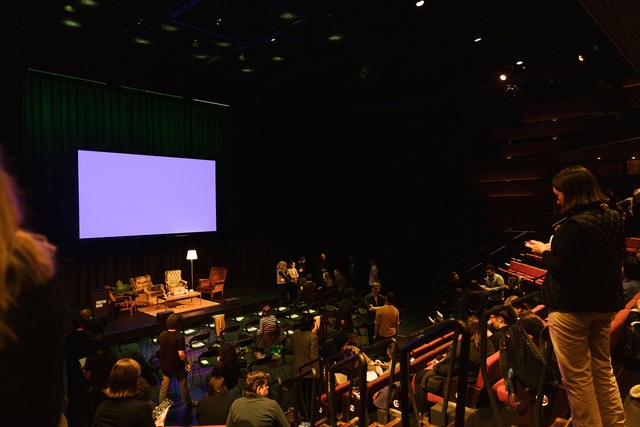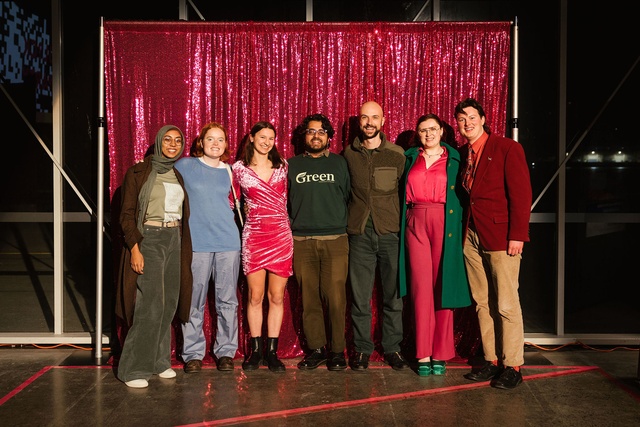Influential speakers at ASAC 2024
After 20 years, the biennial Australasian Student Architecture Congress (ASAC) was held on the chilly shores of Lutruwita Tasmania, with 170 students gathering in Nipuluna Hobart for the much-anticipated five-day event taking place across 25–29 June. With only six Aucklanders in attendance this year, much hurrah was had around our presence.
The theme for 2024’s ASAC was ‘Ground Matters’. Representing a dual meaning, participants were oriented to matters of the ground and to matters of fact. Acknowledging the inextricable links between the natural world and the built form, the theme encouraged discourse surrounding the linking element of ground. ‘Ground Matters’ fostered ideas of sustainable architecture for the future and how it relates to the ground and our immediate natural contexts asking:
“If architecture is the end, the ground is the beginning. So how can we reframe our architectural thinking to ensure that ground is at the forefront of our work?”
Day 1

Kicking off the first day at the University of Tasmania was DIY merch-making with ice being sufficiently broken as students began to share design inspiration and paint colours.
Following this, students moved into a workshop session led by Indigenous Australian architectural lecturer Michael Mossman and architect Genevieve Murray. The workshop certainly set the theme for the week, with intense discussions arising around the design connections to the Country and the state of architectural education in Australia.
After one hastily sung “Happy Birthday” to Mossman, attendees moved to the local hang-out. Notably, Queenslanders huddled around the fire pit while we Aucklanders bore the cold with a stiff upper lip. Rodney Dillon, a well-respected First Nations elder who lives on Palawa Country, welcomed us onto Country with a smoking ceremony and a reminder that Ground Matters is not just a theme for a conference but a commitment to greater respect for the lands we build on.
Day 2
Conference day started with back-to-back keynotes and round-table (or comfy chair) discussions around the theme ‘Ground Matters’. Helsinki-based practice, Collaboratorio, founders Kristiina Kuusiluoma and Martino De Rossi spoke first on their mission to reintroduce natural materials in contemporary contexts. Andrew Steen, lecturer at the University of Tasmania, documented the presence of brick and bluestone in Tasmania’s building vernacular.
Following on, Matt Hinds, of the Lutruwita Tasmania-based practice of Taylor + Hinds, described his work as a non-Indigenous Australian designer working on Indigenous projects with a key quote; “to know a place, we must live in it.” After Hinds, Louise Wright and Mauro Baracco of Baracco + Wright spoke to architecture’s relationship with the ground and explorations conducted through their studio labs at Monash University.

After a much-needed lunch break, Sarah Lyn Rees, a Palawa architect and indigenous advisor at Jackson Clement Burrows, walked attendees through the design process behind several of her projects. Malaysian architect Eleena Jamil spoke on her practice’s focus on bamboo structures and collaborations with local artisans to return to the country’s vernacular, echoing Collaboratorio’s earlier sentiments around natural materials.
With only an hour and a half on the clock, Timothy Hill attempted to convince a bunch of university students that the plan was the most important drawing through a thorough explanation of Walter Burley Griffen’s plan for Canberra. An intense discussion after the event implied that he may have failed to do so. Kerstin Thompson rounded out the day with her take on the theme: Grounds (thoughts) and groundings (foundations).
The intense back-to-back speaker sessions certainly left attendees buzzing with new information, prompting rich discussion as the event moved towards drinks at the Tasman Hotel that night.

Day 3
Christopher Kelly of Architecture Workshop started the next morning with his keynote, speaking on the architect’s obsession with narrative and showcasing the practice’s projects. Congress attendees then moved into various workshop sessions, ranging from rammed earth-making with Collaboratorio to photomontage with Andrew Steen. A talk-show-style event with workshop facilitators wrapped up the day, with attendees relocating to a dive bar to learn about the wonderful world of unions.
Day 4
Walking tours commenced to all corners of the city, with some attendees sharing rather delicious shortbread cookies with the Tasmanian Governor while others visiting the Hobart Rivulet. Attendees were then treated to a Pecha Kucha facilitated by the International Chapter of the Australian Institute of Architects, displaying the broad range of members and practices that were based abroad. The day concluded with a super-secret bonfire party in the Aussie outback (25 minutes from the CBD).

Day 5
The final day saw a noticeable absence of attendees, suffering the effects of last night’s good time. Others were lucky enough to score free tickets to the notorious Museum of Old and New Art, which included a guided tour from Fender Katsalidis project architect James Pearce. The not-so-lucky opted for a slow walk through the Salamanca Markets before heading back to the university for pitch time.
With four pitches presented from Auckland, Sydney, Melbourne and Newcastle, voters had a difficult decision to make before heading off to get dressed for their night out. The Tasmanian Chapter of AIA and the Ground Matters team collaborated on the closing party, merging it with the local and international chapter architecture awards. Awards goers were treated to in-the-air acrobatics and a live band (NZIA take notes) with dinner consisting of a large banquet table filled to the brim. There was some architecture as well.

The most important announcement of the night concluded the event with Ground Matters organisers announcing the next hosts were… the Auckland team! Excitement was palpable as students realised they would be heading to Tāmaki Makaurau for the summer of 2026 but the real exciting news soon came that the afterparty would be held at Tim Hill’s office.
I must thank the amazing Ground Matters team for putting on a stunning congress. The quality of speakers and content was incredible and it was great to build relationships with our friends over the ditch. We look forward to hosting the next congress in much warmer weather in 2026.
Learn more about Ground Matters Australasian Student Architecture Congress here.










